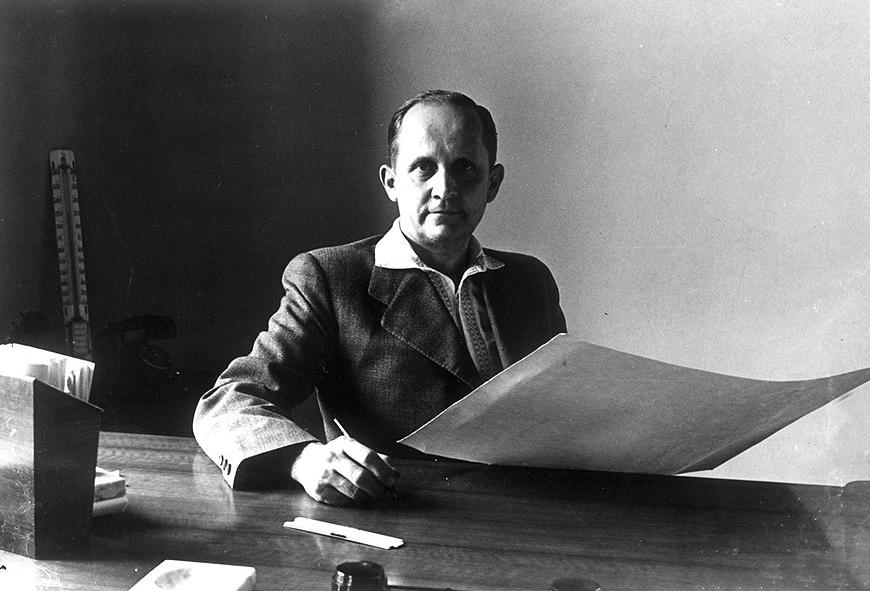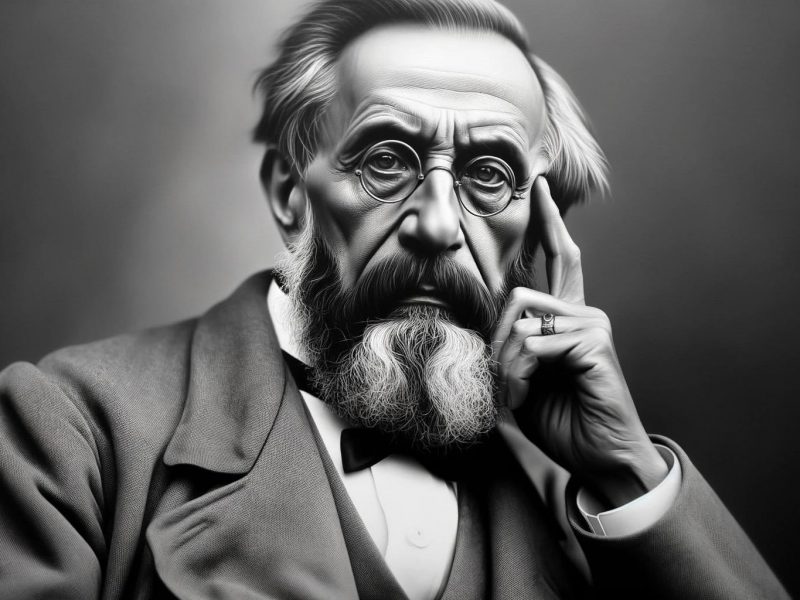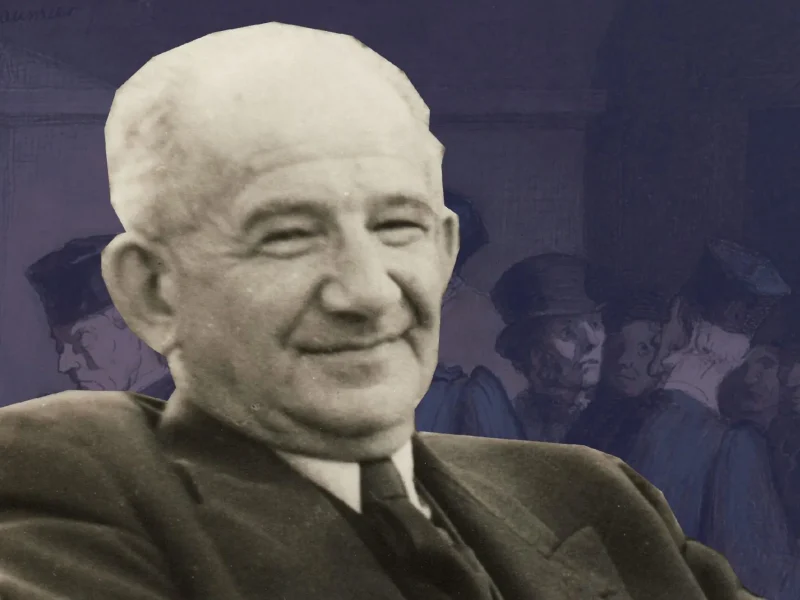So, when you think of aerospace legends, folks like the Wright siblings, Chuck Yeager, and Howard Hughes usually steal the limelight. But there’s a name you might not have heard much about, even though he’s every bit deserving of the praise: Pavel Sukhoi. This guy founded the beast of a company known as Sukhoi Design Bureau, and boy, his life journey is anything but dull!
Born in 1895 in a humble Belarusian village, young Pavel was the kind of child enchanted by the heavens above. It’s a beautiful thought, really, to think that this boy, who could’ve spent hours watching birds soar, would one day create sky-dominating machines.
Speed up to 1925, and Pavel finds himself at the Zhukovsky Air Force Engineering Academy in the heart of Moscow. For a lad fascinated by aircraft design, this was like hitting the jackpot. The academy not only equipped him with knowledge but also connected him with Andrei Tupolev, another giant in the sky game.
What set Sukhoi’s creations apart was their utter simplicity. They were user-friendly, easy to build, and reliable—yet high-performing. And let’s be real; in an era on the brink of World War II, this was revolutionary stuff. Take the Su-2 light bomber as an example. That bad boy was agile, sturdy, and exactly what the Red Army needed.
But it wasn’t all sunshine and rainbows for Pavel Sukhoi. In 1949, the political climate caused the closure of his design institution, stalling many ongoing ventures. It’s crazy to think that someone of his caliber had to go through such turmoil. But the man had grit; he didn’t fold.
Then 1953 rolled around, and fortune smiled on him again with the rebirth of his design bureau. The Cold War gave us iconic crafts like the Su-7, Su-17, and Su-24. These weren’t merely pieces of metal with wings; they were statements of prowess. They shouted to the world that Sukhoi and his squad were no joke.
And here’s the part that really tugs at the heartstrings: Pavel Sukhoi showed a kind of grit and love for his craft that’s beyond admirable. The guy encountered setbacks that could’ve shattered anyone else, but he pushed through. When he departed from this world in 1975, it wasn’t just a loss of a genius; it was a passing of a titan whose impact still resonates.
So, if today’s technological marvels make you think about mobile apps or cool gadgets, spare a thought for trailblazers like Pavel Sukhoi. They show us that when you mix a little bit of love with a whole lot of determination, not even the sky can hold you back.
And there it is! A refreshed look into the life of a guy who proved that dreams, no matter how lofty, are reachable. It’s a tale that reminds us why history is so darn inspiring. A toast to those who dream and those who do!
The Unseen Genius of Pavel Sukhoi: His Creations and Scientific Brilliance
You’ve gotta give it to him, the man started from the bottom. Born in 1895, in a time where flight was still a newborn concept, Pavel’s dreams were sky high—pun intended. Imagine that small-town kid gazing up at the heavens and thinking, “One day, that’ll be me up there.” Fast forward to his time at Zhukovsky Air Force Engineering Academy, where his mentor was none other than Andrei Tupolev. It’s like a young painter studying under Picasso.
Now, let’s get down to the nitty-gritty of aerodynamic principles and technological innovations. Sukhoi wasn’t just creating any planes; he was constructing masterpieces with real scientific ingenuity. When building aircraft like the Su-2 light bomber, Sukhoi aimed for a unique balance between agility, speed, and sturdiness. He integrated the concept of center of gravity into his designs long before it became a standard. In simple terms, he made sure the heaviest parts of the plane were in the center, allowing for better control and stability during flight.
Another brilliant theorem was his focus on streamlined designs. Pavel knew the importance of reducing drag in his aircraft. You know, drag—the force that opposes an object’s motion through a fluid like air. By making his planes as sleek as possible, he was, in essence, pushing the boundaries of what was considered standard aerodynamic efficiency.
But let’s talk numbers and specifics, shall we? Pavel’s Su-7 was an epitome of advancement. This jet was designed to reach speeds of up to 2,124 kilometers per hour and altitudes of 20,000 meters. Yep, you heard that right. This beast could go where few others dared. The Su-7 wasn’t just a flying piece of metal; it was a marvel of engineering and scientific calculation.
And oh boy, the 1960s were a game-changer for Sukhoi. His design bureau launched the Su-17, the world’s first variable-sweep wing aircraft. This feature allowed the pilot to change the wing shape mid-flight. Imagine driving a car that can adapt its shape based on whether you’re in city traffic or an open highway. That was the Su-17 for pilots, giving them a Swiss Army knife in the air.
However, life wasn’t always smooth sailing, or should I say smooth flying, for Pavel. His design bureau was shut down in 1949 due to political influences. It could’ve been the end of the road for most people. But Pavel? He wasn’t one to quit. He held on and made a comeback with the reopening of his bureau in 1953.
Through all the highs and lows, Pavel Sukhoi left an indelible mark in aeronautical science. His groundbreaking work in variable-geometry wings, high-speed aerodynamics, and efficient design principles set a standard for generations of engineers to follow.
The Mastermind Behind the Su-2: Pavel Sukhoi’s Genius in Detail
From the get-go, the Su-2 wasn’t just some aircraft hastily thrown together. Nah, it was an intricate piece of work, almost like a Swiss watch but for the sky. It was vital for the Red Army back in the day, making it more than just a flying machine; it was a flying fortress, with bells and whistles, no less.
Now let’s get into the thick of it—the scientific smarts that Pavel had up his sleeve. Think of drag as that nagging force that slows you down when you’re swimming. Pavel’s Su-2 was sculpted to slice through that drag like a hot blade through frozen butter. That sleek design? Oh, it was deliberate, making the airplane almost glide effortlessly through the sky.
Ah, but let’s not forget lift. That’s the invisible hand that pushes the plane upwards against gravity. Pavel fitted the Su-2 with unique high-lift devices, such as specially designed flaps and slats. We’re not talking about garden-variety gadgets here; these were engineered to precision to provide the maximum lift with the least resistance. Think of it as your best hype-man who knows just when to pump you up.
But wait, there’s more! You can’t just throw a bunch of parts together and hope it flies well. Nope, Pavel was keen on weight distribution, focusing on the center of gravity for the aircraft. Picture balancing a plate on a stick. If the weight isn’t even, you’re headed for a crash. Pavel knew this, so he made sure his Su-2 was balanced to a T, making it a reliable and agile bomber.
Numbers, anyone? This baby could clock speeds of 450 km/h, and stretch its wings over a 1,000-km range. We’re talking about the 1940s here, making these figures pretty darn impressive. And it didn’t just carry love notes; the Su-2 could lug around 400 kg of explosives. Combine this with its agility, and you’ve got a flying machine that’s more like a multi-tool than just another plane.
Now let’s gab about the cockpit, designed to be as user-friendly as an iPhone. The controls? All within arm’s reach, making those tense moments of combat a bit more manageable. The field of view? Superb. Because when you’re evading enemy artillery, you need eyes at the back of your head—or at least, a good view out of your cockpit.
So, in a nutshell, Pavel Sukhoi wasn’t just messing around when he designed the Su-2. His insights into aerodynamics, coupled with his uncanny knack for creative engineering, resulted in an aircraft that was way ahead of its time.
Pavel Sukhoi and the Jets of the Cold War Era
First off, we can’t skip talking about the Sukhoi Su-7, a jet that was a game-changer. During the Cold War, having a fast and versatile fighter-bomber was the name of the game. And that’s precisely what the Su-7 was. Its engine was so strong that it could hit Mach 2. This was colossal for its time.
Speaking of aerodynamic theorems, Pavel was keen on wing loading. That’s basically how much weight the wings can handle relative to their size. You see, wing loading directly affects maneuverability. The Su-7 had a low wing-loading, meaning it was nimble and agile. It’s like having the perfect pair of running shoes for a sprinter.
Now, the Sukhoi Su-9 is another marvel. This interceptor was armed to the teeth with air-to-air missiles. You’d think with all that weight, it’d be slow as molasses, right? Wrong! The Su-9 could reach altitudes of 20,000 meters in no time. Pavel tinkered around with something called thrust-to-weight ratio. He adjusted the engine power to the weight of the aircraft, making it a balanced beast. You could call this jet the perfect predator, always ready to pounce.
Ever heard of Radar Cross-Section (RCS)? Yeah, this is where things get scientific. The Sukhoi Su-15, another iconic Cold War jet, was designed to have a lower RCS. It’s kind of like being the James Bond of jets—slipping into enemy territory without being easily detected. Lowering RCS is like throwing on an invisibility cloak; it’s all about deflecting radar waves, making the jet harder to spot.
Oh, but Pavel was more than just a one-trick pony. Take stealth technology. The man was a visionary, already theorizing ways to make aircraft less detectable in a time when this sort of tech was barely understood. Though he didn’t live to see it come to fruition, his theories laid the groundwork for future stealth aircraft.
Let’s get into some specifics. When it comes to speed, the Sukhoi Su-17 was no slouch. The aircraft could dart around at speeds of 1,800 km/h, about as fast as you’d want any warplane to go. And the range? About 1,150 km, enough to cover some serious ground or, well, air.
Alright, let’s rap about G-forces. Pavel understood that pilots are, well, human. They can only handle so much gravitational pull before they’re out like a light. He designed the cockpit of his jets to minimize these forces, making sure the pilot stayed alert and on point.
Pavel wasn’t just about the jets; he was also into data collection. He fitted his planes with state-of-the-art instrumentation, capturing real-time data that could be analyzed for performance tweaks. We’re talking 20th-century Big Data, military-style.
So there you have it, folks. Pavel Sukhoi wasn’t just scribbling aircraft designs on a napkin; the man was essentially writing the playbook for Cold War aviation. The jets he created were not only marvels of engineering, but they were also testaments to human ingenuity. Whether it was a new theorem on aerodynamics or some nifty gadgetry to give his jets the edge, Pavel left no stone unturned.
Pavel Sukhoi’s Star-Studded Legacy and Awards
Step right up and take note of the Order of Lenin. This wasn’t some dime-store ribbon; it’s one of the highest civilian awards in the USSR. Pavel didn’t just grab this trophy once; he was a two-time winner. Imagine having two Super Bowl rings but for aeronautics. It’s a reflection of his indomitable spirit, an acknowledgment that he didn’t just play the game but changed the whole darn playbook.
Now, for my fellow geeks who love theorems and technical stuff—let’s talk supersonic flow. Pavel was a pathfinder in understanding how air flows over a plane’s wings at super high speeds. His research wasn’t just academic fluff. It was integral to the design of many Soviet jets, creating aircraft that could slice through air like a hot knife through butter. These findings are used even today, which is a pretty sweet deal for a guy whose work dates back to mid-20th century.
Okay, let’s shift gears to the Tsiolkovsky Gold Medal. Named after Russian space pioneer Konstantin Tsiolkovsky, this medal is like the Nobel Prize for aeronautics. When Pavel bagged this in 1965, it was clear that he wasn’t just a hometown hero; he was globally recognized for advancing the field of aviation technology.
Statistical metrics? Yeah, the guy loved numbers too. He knew that a plane’s success wasn’t just about how cool it looked; it was also about performance data. So he was super into developing real-time monitoring systems for his aircraft, which were absolutely groundbreaking for their time. This is like Moneyball but for military hardware, using stats to get the upper hand.
How about cultural legacy? Look no further than the Sukhoi Company. What started as a brainchild blossomed into a gigantic corporation that’s a titan in military aerospace engineering. When you hear about cutting-edge Russian jets like the Su-57, remember it’s all built on the foundational brilliance of Pavel Sukhoi. It’s like the Apple Inc. of fighter jets, and Pavel is the Steve Jobs of the story.
Now, let’s not forget his influence on education. The Moscow Aviation Institute, where he taught, has become one of the premier schools for aerospace engineering worldwide. The educational curricula he helped shape are still in use. And let’s face it, there’s no better homage to a man’s genius than having his teachings mold the next generation of aerospace nerds.
Ever heard of Hero of Socialist Labor? Pavel was honored with it, not just for being a standout engineer but for his contributions to the state. This is like the MVP Award but for your entire career.
In the grand scheme of things, Pavel Sukhoi isn’t just a name you read in aviation history books. He’s a legend, the kind of guy whose ideas are still fueling innovations in aerospace. And that, my friends, is what we call leaving an indelible mark on history. Whether it’s in the accolades that filled his shelves or the ongoing significance of his work, the guy is a titan, plain and simple.
Conclusion
Alright, let’s wrap this up in style. When you think about Pavel Sukhoi, it’s like thinking about the Beatles of the aviation world. This man didn’t just make airplanes; he shaped the very fabric of aerospace engineering. His touch wasn’t confined to mere machinery; it extended to the lives of pilots, engineers, and yeah, even entire nations. The guy was a rock star in a lab coat and aviation goggles.
If you’re ever in a conversation about the great minds of the 20th century, and Pavel Sukhoi’s name doesn’t come up, you have full permission to drop some knowledge. This isn’t just about a guy who built some cool fighter jets during the Cold War. Nah, this is about an individual whose intellect was a force of nature. His creations were masterpieces, like Van Gogh with a wrench instead of a paintbrush.
And here’s the kicker: the legacy he left behind isn’t just in museums or old engineering books gathering dust. It’s up there in the sky, every time a Sukhoi jet roars past. It’s in the lecture halls of aerospace departments, where young minds are still getting blown by his theories. It’s in the eyes of every kid who looks up and dreams of touching the stars. Pavel Sukhoi didn’t just live; he’s still very much alive in every plane that takes off, embodying human ingenuity and the audacity to dream big.
So, if anyone asks you about heroes, about people who have made the world a bit more extraordinary, you know what name to drop. Because, hey, legends never really die, do they?
References
- “The Life and Works of Pavel Sukhoi”
- “Sukhoi Jets: An Engineering Marvel”
- “Pavel Sukhoi: The Man Behind the Machines”
- “Cold War Skies: The Contribution of Pavel Sukhoi”
- “Sukhoi’s Legacy: A Lasting Impact on Modern Aviation”
- “Russian Aviation Pioneers: From Tsiolkovsky to Sukhoi”
- “Pavel Sukhoi: The Intellectual Giant of Aerospace”
- “Sukhoi and the Order of Lenin: A Tale of Triumph”


